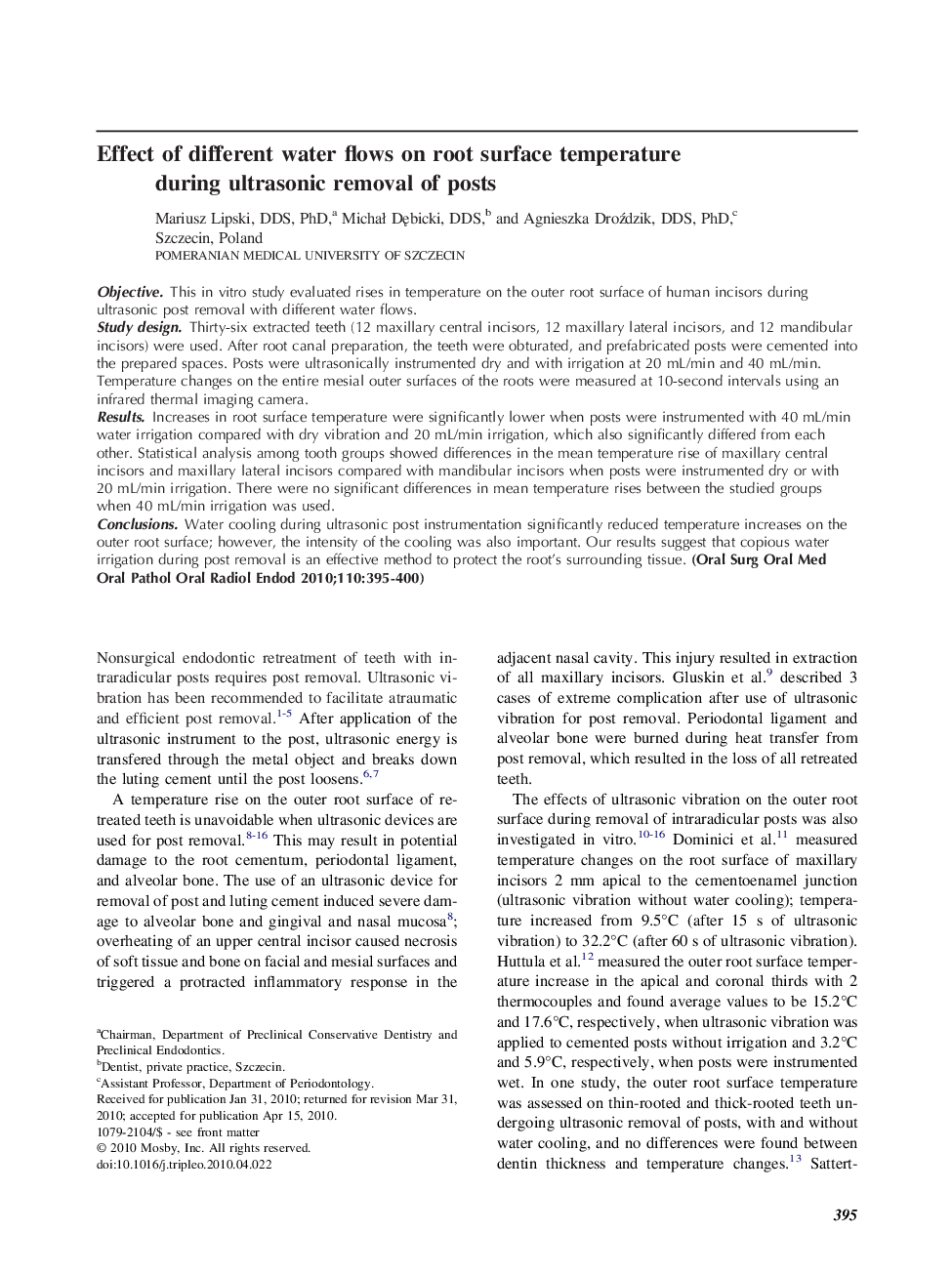| Article ID | Journal | Published Year | Pages | File Type |
|---|---|---|---|---|
| 3167434 | Oral Surgery, Oral Medicine, Oral Pathology, Oral Radiology, and Endodontology | 2010 | 6 Pages |
ObjectiveThis in vitro study evaluated rises in temperature on the outer root surface of human incisors during ultrasonic post removal with different water flows.Study designThirty-six extracted teeth (12 maxillary central incisors, 12 maxillary lateral incisors, and 12 mandibular incisors) were used. After root canal preparation, the teeth were obturated, and prefabricated posts were cemented into the prepared spaces. Posts were ultrasonically instrumented dry and with irrigation at 20 mL/min and 40 mL/min. Temperature changes on the entire mesial outer surfaces of the roots were measured at 10-second intervals using an infrared thermal imaging camera.ResultsIncreases in root surface temperature were significantly lower when posts were instrumented with 40 mL/min water irrigation compared with dry vibration and 20 mL/min irrigation, which also significantly differed from each other. Statistical analysis among tooth groups showed differences in the mean temperature rise of maxillary central incisors and maxillary lateral incisors compared with mandibular incisors when posts were instrumented dry or with 20 mL/min irrigation. There were no significant differences in mean temperature rises between the studied groups when 40 mL/min irrigation was used.ConclusionsWater cooling during ultrasonic post instrumentation significantly reduced temperature increases on the outer root surface; however, the intensity of the cooling was also important. Our results suggest that copious water irrigation during post removal is an effective method to protect the root's surrounding tissue.
